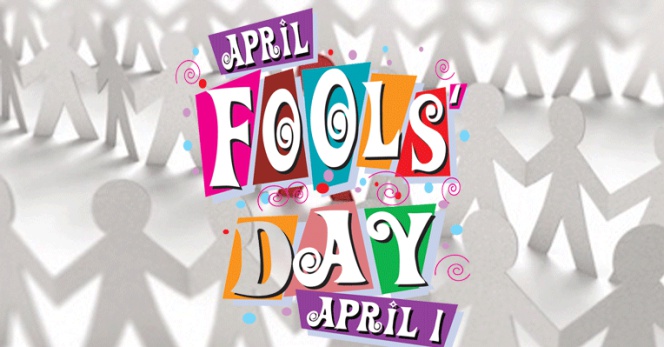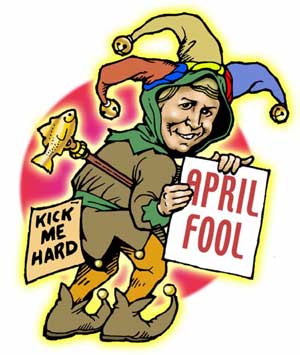My English Corner for 1st ESO
Thursday, 1 May 2025
Thursday, 10 April 2025
Saturday, 29 March 2025
Here comes April Fools' Day!
I'm sure all of you have heard of pranks, jokes and the rest, but most of you don't really know where it comes from.
First, do the following quizz to check how much do you know about jokes and vocabulary related to it. CLICK ON THIS PUN TO FIND OUT.
Watch the clip from ASK HISTORY and answer the questions. click here
So, do you have similar celebrations in your country? When do they take place?
Saturday, 22 March 2025
Tuesday, 18 March 2025
Thursday, 13 February 2025
Prepositions of time
At
Use at with times of day, including mealtimes, bedtime, etc.
- at 3 o’clock, at 10.30 am, at noon, at dinnertime, at bedtime, at sunrise, at sunset, at the moment
Use at in the following common expressions:
- at the weekend: I don’t usually work at the weekend.
- at Christmas/Easter: I stay with my family at Christmas.
- at the same time: We finished the test at the same time.
- at present/at the moment: He’s not home at present. Try later.
In
Use in with months, seasons, years, decades, centuries and long periods of time in general.
- in May, in the summer, in 1990, in the 1990s, in the 20th century, in the Ice Age, in the past/future
On
Use on followed by days and dates.
- on Sunday, on Tuesday mornings, on 6 March, on 25 December 2010, on Christmas Day, on Independence Day, on my birthday, on New Year’s Eve
Parts of the day:
- in the morning
- in the afternoon
- in the evening
- at night
Last, next, every and this
When we say last, next, every, this, we do not use at, in, on.
- I went to London last June.

- I went to London in last June.

- He’s coming back next Tuesday.

- He’s coming back on next Tuesday.

- I go home every Easter.

- I go home at every Easter.

- We’ll call you this evening.

- We’ll call you in this evening.

Friday, 7 February 2025
Superlative form of the adjectives
Something that is superlative is the highest possible quality it can be. It can be the best, the worst, the tallest, or the most important — if it can’t be more, it’s superlative.
Like all adjectives, superlative adjectives modify or describe one quality of a noun or pronoun.
- Mark is the oldest kid in the class.
(No one is older than Mark) - Percy is the cutest dog in the kennel.
(No dog is cuter than Percy) - You have the longest hair I have ever seen.
(No one has longer hair than you do) - Mary is the most gullible person I know.
(No one is more gullible than Mary) - This is the least interesting movie I’ve ever seen.
(No movie is less interesting than this one)
Superlative adjectives can be positive (best, most talented, prettiest), or they can be negative (worst, least talented, ugliest).
As long as they can’t get any more (or less), they’re superlative adjectives.
But how do you turn a regular adjective into a superlative, and how is it different from a comparative adjective?
How to make superlative adjectives
Typically, you form superlative adjectives by adding -est to the end, or you add the adverb most in front of them.
There aren’t specific rules for when to use each, but generally, the different types of adjectives below follow different spelling patterns when in the superlative form.
Type of Adjective | Superlative Form | Example |
One-syllable adjectives (strong, weak, cold) | Add -est to the word | He was the strongest man alive. That’s the weakest argument. December is the coldest month. |
One-syllable CVC adjectives (big, sad, thin) | Double the last consonant and add -est | Ike was the biggest dog in town. I’m saddest when it rains. We ordered the thinnest pasta. |
One- and two-syllable words ending in silent E (rare, fine, little) | Add -st to the word, since the E is already in place | What is the rarest gem? I only wear the finest clothes. Mike ordered the littlest pizza. |
Two-syllable words ending in Y (funny, silly, pretty) | Change the Y to an I and add -est | Bozo is the funniest clown. Who can make the silliest sound? Mrs. Jones has the prettiest flowers. |
Two-syllable adjectives that don’t end in Y (careful, boring, patient) | Add most before the word | The most careful drivers look both ways before they go. That’s the most boring class I’ve ever attended. Sandy is the most patient person we know. |
Any adjectives with three or more syllables (restrictive, annoying, talented) | Add most before the word | Our state has the most restrictive smoking laws. Your brother is the most annoying person ever. We watched the most talented band perform last night. |
Need to Know
- quietest or most quiet
- narrowest or most narrow
- simplest or most simple
- gentlest or most gentle
Irregular Superlative Adjectives
Some adjectives don’t follow these patterns when in the superlative form.
Irregular Adjective | Comparative Form | Superlative Form |
good | better | best |
bad | worse | worst |
little | less | least |
far | farther (or further) | |
much | more | most |
Adjectives are put into four different categories before creating their comparative and superlative forms:
- one-syllable or short adjectives
- two or more syllable long adjectives
- adjectives that end with ‘y’
- irregular adjectives.
1. To make one-syllable or short adjectives into superlative adjectives we add ‘the’ before the adjective and ‘est’ to the end of the adjective.
- short becomes the shortest
- long becomes the longest
2. To make two or more syllable long adjectives into superlative adjective add ‘the most’ before the adjective.
- comfortable becomes the most comfortable
- impressive becomes the most impressive
3. To make adjectives that end with ‘y’ into superlative adjectives we add ‘the’ before the adjective, we remove ‘y’ at the end of the adjective and add ‘iest’.
- easy becomes the easiest
- heavy becomes the heaviest
4. To make irregular adjectives into superlative adjectives you just have to learn the superlative form. Fortunately they aren’t many.
- good becomes the best
- bad becomes the worst
- far becomes the furthest / the farthest
Adding “Least” To a Superlative Adjective
- Kerry is the least friendly of all your sisters.
- They have the least pretty lawn in the neighborhood.
- Math is the least interesting subject for me.































